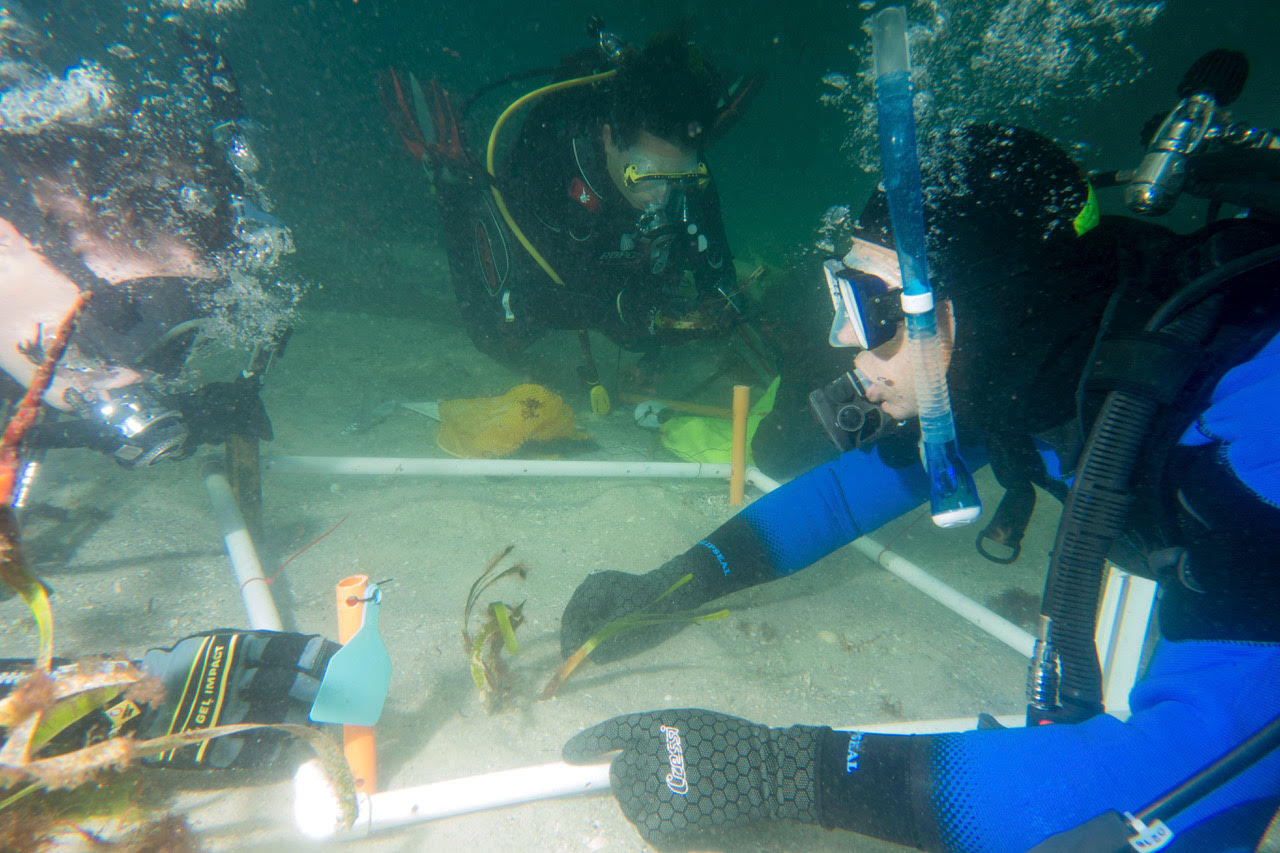The Solution
Addressing the cause of decline coupled with restoration could help bring back Posidonia meadows. But we need your help!
Sedimentation
Environmentally friendly moorings
The only way to prevent damage to the marine environment by boat moorings is to change their design, so that there are no components dragging along the seafloor.
In recent years, a variety of mooring designs have emerged that prevent chains dragging along the seafloor. These new types of moorings are collectively known as Environmentally Friendly Moorings (EFMs), and they are slowly replacing traditional block and chain moorings in many coastlines worldwide, but are not yet used extensively in New South Wales.
Diagram: EFM vs Traditional swing mooring
Once mooring chains are removed, however, the natural revegetation of bare patches by Posidonia can be very slow, especially when mooring scars have expanded and altered local hydrodynamics. In some places it could take over 20 years for a mooring scar to be revegetated by Posidonia naturally.
Our aim is to give nature a helping hand and promote the recovery of Posidonia by combining the restoration of Posidonia in old mooring scars where swing moorings have been removed.
Mooring scars in Posidonia meadows in Lake Macquarie
Posidonia restoration is underway!
Operation Posidonia started in Port Stephens, with early results very promising.
The project is now expanding with restoration starting in Lake Macquarie and Gamay Botany Bay.
In 2022 an exciting new project begins, combining restoration of Posidonia with rehabilitation of Whites Seahorse populations, an iconic species that has declined along with habitats it relies on, such as Posidonia.
Collaborations
we are collaborating with a variety of . . .
Storm Squad
Operation Posidonia has come up with an exciting way to restore the seagrass involving local communities. Find out more.




